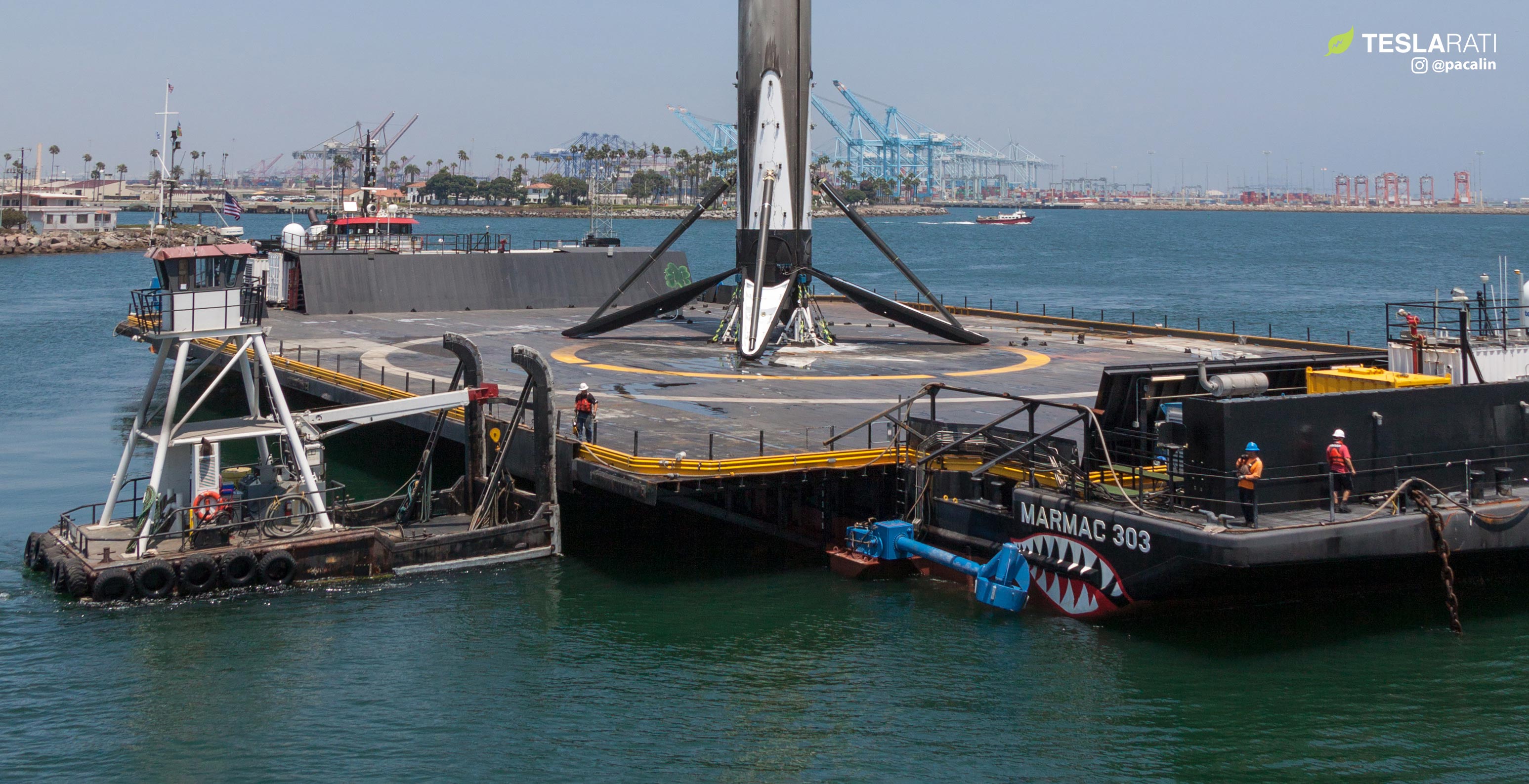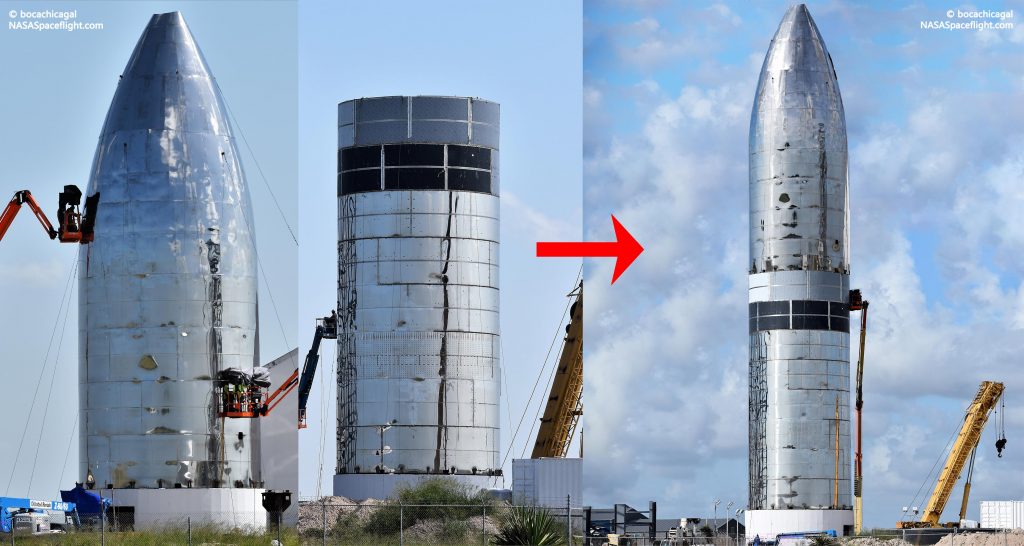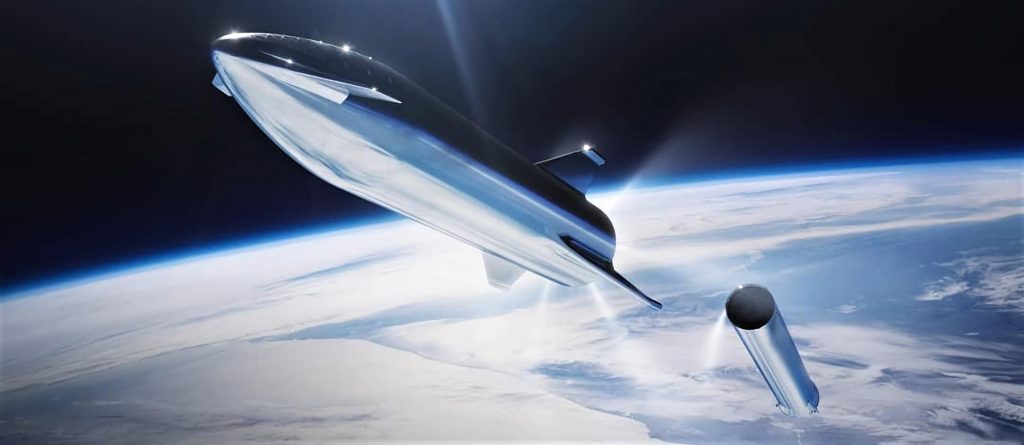

News
SpaceX’s West Coast drone ship begins Panama Canal transit on journey to Florida (or Texas)
After traveling more than 3500 miles (5600 km), SpaceX autonomous spaceport drone ship (ASDS) Just Read The Instructions (JRTI) began its eastbound transit of the Panama Canal on August 18th, placing the vessel roughly two-thirds of the way to its unknown destination.
As previously discussed on Teslarati, JRTI’s move came as a bit of a surprise and it’s still anyone’s bet if the SpaceX recovery vessel heads for Texas or Florida immediately after exiting the Panama Canal. Nevertheless, JRTI’s presence at either (or, more likely, both) possible destinations arguably centers around the imminent demands of a planned ramp of SpaceX’s Starlink satellite constellation launch cadence, as well as an equally imminent need for recovery assets to support the first suborbital Starship test flights.
On July 31st, JRTI departed Port of Los Angeles – its home for the last four years – under tow behind tugboat Alice C. The duo arrived at the Canal on August 15th and, after a several-day wait in a large passage queue, the drone ship and its paired tugboat are finally on their way through the canal, although traffic still remains high and another day (or several) of waiting is likely in order.
After successfully making it through the first half of the transit, JRTI and Alice C are currently waiting in line while westbound traffic is routed through. That wait will likely last hours, not days, (hopefully) allowing JRTI to exit the canal on Tuesday or Wednesday, leaving drone ship free to head towards its final destination.
JRTI has two possible destinations: Port of Brownsville, Texas or Port Canaveral, Florida. Both options are roughly 1800 mi (3000 km) from the Panama Canal’s western mouth and, extrapolating from the first major leg of the journey, should take Alice C around 8 days to tow JRTI across the finish line. Barring mishaps, the drone ship should thus be able to arrive at its new home sometime in the final week of August – roughly August 27th to the 31st.
To the East, to the Gulf
As previously discussed on Teslarati, there are good cases to make for both potential drone ship destinations. On the East Coast, SpaceX’s plans to ramp up its internal Starlink launch cadence could require multiple drone ship to prevent those ambitions from seriously impacting the company’s commercial launch manifest. The readiness of one or two of the payloads is uncertain, but SpaceX has anywhere from seven to nine Falcon 9 launches scheduled in Q4 2019, requiring a cadence significantly higher than SpaceX’s activity in the first half of 2019.
At the same time, extrapolating from SpaceX’s H1 2019 cadence (1.33 launches per month), more than doubling that average cadence to 3 launches per month in the final quarter seems ambitious, at a minimum. SpaceX has achieved six-launch quarters several times in the last few years, likely a reasonable expectation for Q4 2019. In short, this is all to say that SpaceX has made do with one drone ship in the past while hitting similar launch cadences, meaning that the need for JRTI at Port Canaveral is probably not urgent.
On the Gulf Coast, SpaceX has established a Starship development facility in Boca Chica, Texas, just a handful of miles north of the southernmost tip of Texas. A full-scale, low-fidelity prototype known as Starhopper completed its first test flight on July 25th and is likely just days away from a second test flight. Meanwhile, SpaceX Boca Chica is simultaneously assembling what CEO Elon Musk has described as the “Mk1” orbital Starship prototype and is making spectacularly rapid progress.

Musk recently tweeted that SpaceX’s Mk1 Starship and a second parallel build – Starship Mk2 – could be ready for their first (suborbital) flights as early as late-September or October, followed by one of the spacecraft’s first orbital launch attempt an incredibly ambitious “2-3 months after” the first test flight. Per additional statements from Musk in 2018 and 2019, SpaceX plans to subject either or both of its Mk1 and Mk1 Starships to a high-altitude, high-velocity test program before proceeding to orbital launch attempts.
Said extreme testing could easily involve Starship traveling on high suborbital trajectories dozens or even hundreds of miles above Earth’s surface, potentially demanding an ocean-going landing platform far downrange. Given that Starship is in its very early stages of integrated development, any downrange assets (i.e. JRTI) needed for test flights will need to be very flexible, as Starship launch attempts could easily slip days or weeks with little to no notice.

Best of both worlds
Although pitting options against each other is entertaining and has its uses, the fact remains that once drone ship JRTI has passed through the Panama Canal, traveling from, say, Florida to Texas or vice versa is far less arduous a journey than the trip from Port of LA. In other words, moving JRTI between Port of Brownsville and Port Canaveral every few months should be very little trouble, easily allowing the drone ship to service both Gulf and East Coast recovery needs.
Given that SpaceX’s next Falcon 9 launch is believed to be no earlier than late-October, it’s not even out of the question that JRTI will stop in Brownsville for one month or several before heading to Port Canaveral as SpaceX attempts to complete a very busy Q4 2019 launch manifest. Stay tuned…
Check out Teslarati’s Marketplace! We offer Tesla accessories, including for the Tesla Cybertruck and Tesla Model 3.
News
Tesla UK sales see 14% year-over-year rebound in June: SMMT data
The SMMT stated that Tesla sales grew 14% year-over-year to 7,719 units in June 2025.

Tesla’s sales in the United Kingdom rose in June, climbing 14% year-over-year to 7,719 units, as per data from the Society of Motor Manufacturers and Traders (SMMT). The spike in the company’s sales coincided with the first deliveries of the updated Model Y last month.
Model Y deliveries support Tesla’s UK recovery
Tesla’s June performance marked one of its strongest months in the UK so far this year, with new Model Y deliveries contributing significantly to the company’s momentum.
While the SMMT listed Tesla with 7,719 deliveries in June, independent data from New AutoMotive suggested that the electric vehicle maker registered 7,891 units during the month instead. However, year-to-date figures for Tesla remain 2% down compared to 2024, as per a report from Reuters.
While Tesla made a strong showing in June, rivals are also growing. Chinese automaker BYD saw UK sales rise nearly fourfold to 2,498 units, while Ford posted the highest EV growth among major automakers, with a more than fourfold increase in the first half of 2025.
Overall, the UK’s battery electric vehicle (BEV) demand surged 39% to to 47,354 units last month, helping push total new car sales in the UK to 191,316 units, up 6.7% from the same period in 2024.
EV adoption accelerates, but concerns linger
June marked the best month for UK car sales since 2019, though the SMMT cautioned that growth in the electric vehicle sector remains heavily dependent on discounting and support programs. Still, one in four new vehicle buyers in June chose a battery electric vehicle.
SMMT Chief Executive Mike Hawes noted that despite strong BEV demand, sales levels are still below regulatory targets. “Further growth in sales, and the sector will rely on increased and improved charging facilities to boost mainstream electric vehicle adoption,” Hawes stated.
Also taking effect this week was a new US-UK trade deal, which lowers tariffs on UK car exports to the United States from 27.5% to 10%. The agreement could benefit UK-based EV producers aiming to expand across the country.
News
Tesla Model 3 ranks as the safest new car in Europe for 2025, per Euro NCAP tests
Despite being on the market longer than many of its rivals, the Tesla Model 3 continues to set the bar for vehicle safety.

The Tesla Model 3 has been named the safest new car on sale in 2025, according to the latest results from the Euro NCAP. Among 20 newly tested vehicles, the Model 3 emerged at the top of the list, scoring an impressive 359 out of 400 possible points across all major safety categories.
Tesla Model 3’s safety systems
Despite being on the market longer than many of its rivals, the Tesla Model 3 continues to set the bar for vehicle safety. Under Euro NCAP’s stricter 2025 testing protocols, the electric sedan earned 90% for adult occupant protection, 93% for child occupant protection, 89% for pedestrian protection, and 87% for its Safety Assist systems.
The updated Model 3 received particular praise for its advanced driver assistance features, including Tesla’s autonomous emergency braking (AEB) system, which performed well across various test scenarios. Its Intelligent Speed Assistance and child presence detection system were cited as noteworthy features as well, as per a WhatCar report.
Other notable safety features include the Model 3’s pedestrian-friendly pop-up hood and robust crash protection for both front and side collisions. Euro NCAP also highlighted the Model 3’s ability to detect vulnerable road users during complex maneuvers, such as turning across oncoming traffic.
Euro NCAP’s Autopilot caution
While the Model 3’s safety scores were impressive across the board, Euro NCAP did raise concerns about driver expectations of Tesla’s Autopilot system. The organization warned that some owners may overestimate the system’s capabilities, potentially leading to misuse or inattention behind the wheel. Even so, the Model 3 remained the highest-scoring vehicle tested under Euro NCAP’s updated criteria this year.
The Euro NCAP’s concerns are also quite interesting because Tesla’s Full Self-Driving (FSD) Supervised, which is arguably the company’s most robust safety suite, is not allowed for public rollout in Europe yet. FSD Supervised would allow the Model 3 to navigate inner city streets with only minimal human supervision.
Other top scorers included the Volkswagen ID.7, Polestar 3, and Geely EX5, but none matched the Model 3’s total score or consistency across categories. A total of 14 out of 20 newly tested cars earned five stars, while several models, including the Kia EV3, MG ZS, and Renault 5, fell short of the top rating.
Elon Musk
Why Tesla’s Q3 could be one of its biggest quarters in history
Tesla could stand to benefit from the removal of the $7,500 EV tax credit at the end of Q3.

Tesla has gotten off to a slow start in 2025, as the first half of the year has not been one to remember from a delivery perspective.
However, Q3 could end up being one of the best the company has had in history, with the United States potentially being a major contributor to what might reverse a slow start to the year.
Earlier today, the United States’ House of Representatives officially passed President Trump’s “Big Beautiful Bill,” after it made its way through the Senate earlier this week. The bill will head to President Trump, as he looks to sign it before his July 4 deadline.
The Bill will effectively bring closure to the $7,500 EV tax credit, which will end on September 30, 2025. This means, over the next three months in the United States, those who are looking to buy an EV will have their last chance to take advantage of the credit. EVs will then be, for most people, $7,500 more expensive, in essence.
The tax credit is available to any single filer who makes under $150,000 per year, $225,000 a year to a head of household, and $300,000 to couples filing jointly.
Ending the tax credit was expected with the Trump administration, as his policies have leaned significantly toward reliance on fossil fuels, ending what he calls an “EV mandate.” He has used this phrase several times in disagreements with Tesla CEO Elon Musk.
Nevertheless, those who have been on the fence about buying a Tesla, or any EV, for that matter, will have some decisions to make in the next three months. While all companies will stand to benefit from this time crunch, Tesla could be the true winner because of its sheer volume.
If things are done correctly, meaning if Tesla can also offer incentives like 0% APR, special pricing on leasing or financing, or other advantages (like free Red, White, and Blue for a short period of time in celebration of Independence Day), it could see some real volume in sales this quarter.
You can now buy a Tesla in Red, White, and Blue for free until July 14 https://t.co/iAwhaRFOH0
— TESLARATI (@Teslarati) July 3, 2025
Tesla is just a shade under 721,000 deliveries for the year, so it’s on pace for roughly 1.4 million for 2025. This would be a decrease from the 1.8 million cars it delivered in each of the last two years. Traditionally, the second half of the year has produced Tesla’s strongest quarters. Its top three quarters in terms of deliveries are Q4 2024 with 495,570 vehicles, Q4 2023 with 484,507 vehicles, and Q3 2024 with 462,890 vehicles.
-

 Elon Musk4 days ago
Elon Musk4 days agoTesla investors will be shocked by Jim Cramer’s latest assessment
-

 News1 week ago
News1 week agoTesla Robotaxi’s biggest challenge seems to be this one thing
-

 Elon Musk2 weeks ago
Elon Musk2 weeks agoFirst Look at Tesla’s Robotaxi App: features, design, and more
-

 News2 weeks ago
News2 weeks agoWatch Tesla’s first driverless public Robotaxi rides in Texas
-

 News2 weeks ago
News2 weeks agoSpaceX and Elon Musk share insights on Starship Ship 36’s RUD
-

 News1 week ago
News1 week agoWatch the first true Tesla Robotaxi intervention by safety monitor
-

 News2 weeks ago
News2 weeks agoTesla has started rolling out initial round of Robotaxi invites
-

 Elon Musk2 weeks ago
Elon Musk2 weeks agoTesla to launch in India in July with vehicles already arriving: report


















